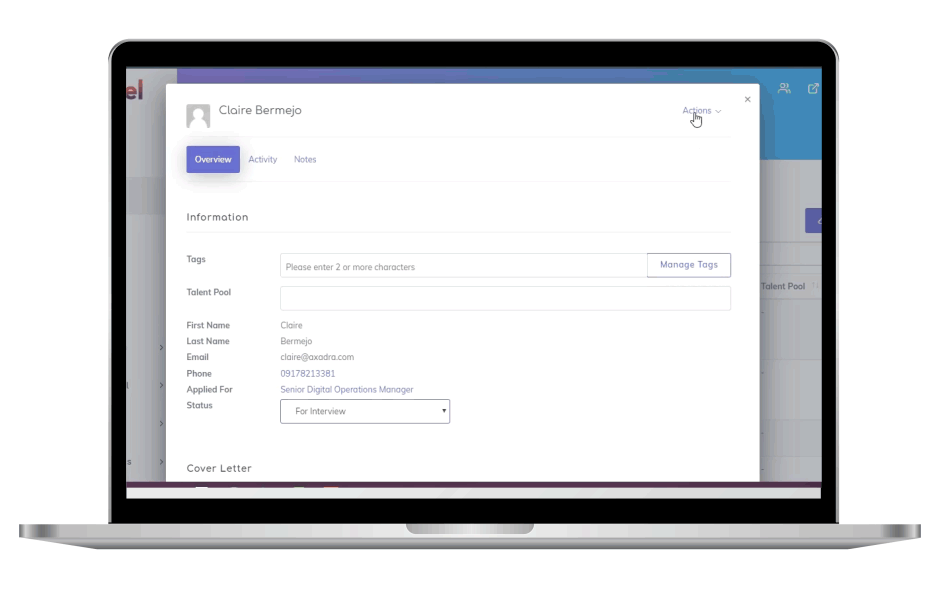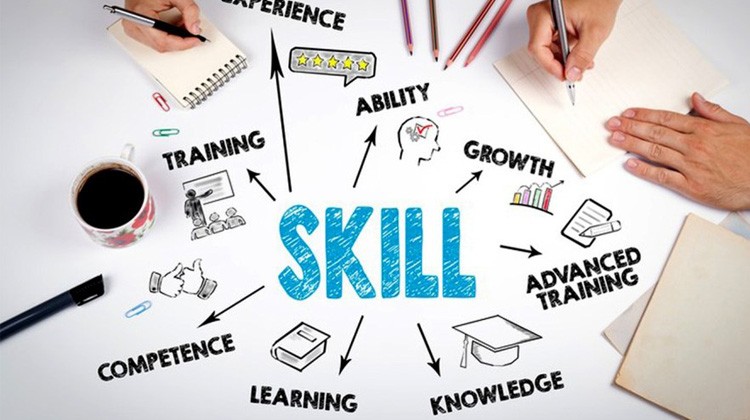Crafting a resume seems easy enough—document your work history and education, slap your contact info on top, and voila! But if whipping up a CV were that simple, everyone would be acing their job interviews. The reality is over 75% of resumes fail to impress hiring managers; only 25% of resumes even make it past applicant tracking systems.
The good news is little tweaks can make your CV shine. Knowing what content to include and customizing it strategically for each role can make all the difference.
This guide shares the essential components that convert an average CV into a powerful tool for jumpstarting your career. Whether you’re a rookie or a seasoned expert, these tips will take your resume from bland to standout. So read on to create a modern CV that showcases ‘Product You’ in the best light possible to turn job searches into coveted interviews!
1. Craft an appealing header
First impressions start right at the top with your CV header info. This is your chance to hook them in under six seconds! Using a simple CV maker site, you can jazz up your header so it looks slick. So type your full name nice and big, make sure your phone and email are on point, and have your LinkedIn profile ready for clicking. If you’re in the creative sector, add your website or portfolio link to showcase your badass work.
Keep it tight, though, or you’ll lose their eyes to wandering. Stick to the basics: name, contact details, social media handles, and portfolios. Keep the tone and design professional, and you’ve got yourself a header with high hire-me potential!
2. Hook with a compelling profile
Think of your personal profile like a movie trailer. It’s like a quick preview that gets the audience hooked and dying to see more. But in the professional world, it’s the hiring managers that you need to captivate to ensure you get an opportunity for an interview.
In just three to four short lines, spell out your wow factor and the best parts of your career story. Tease out your top accomplishments, skills, and why you’re the perfect fit. More importantly, make sure your CV profile directly addresses the company’s needs. So research the company’s goals and missions to know what details to include. Give specifics on how you can solve their pain points like a boss.
Structure your profile around what makes you unique to stand out from the stack of applicants. Sprinkle in some stats and facts to back up your blockbuster claims. Leave the juicy details for later acts and keep it short. This trailer alone could get any casting director to want to call ‘Action!’ on your application.
3. List your skills strategically
Thoughtfully selecting which skills to include and how to present them in your CV can significantly influence the impression you make. According to Forbes, employers claim that they’ve reduced the amount of mis-hires by 88% through skills-based hiring. With recruiters actively scanning for required competencies, highlighting abilities most pertinent to the role is advised.
Concisely feature approximately five to seven of your strongest capabilities, both technical and interpersonal, that closely match the position’s demands. Then substantiate each skill with relevant accomplishments in your work chronology sections for more credibility.
For example, if, during your role as a marketing manager, you were able to increase social media engagement exponentially, you can highlight that accomplishment by including a figure. Any significant achievement can surely capture the interest of and motivate potential employers to further evaluate your comprehensive qualifications.
4. Structure your employment history wisely
Now you’re here at the core content of your CV, which is your rich employment history. This presents a prime opportunity to vividly showcase your most impressive professional achievements. Approach structuring this section with the mindset of a seasoned composer arranging a captivating symphony.
Begin with your current or most recent role and progress in reverse chronological order. For each position, clearly state your job title, the company name, your tenure duration, and geographic location. Then smoothly transition into highlighting three to four of your most substantial accomplishments in that capacity. Quantify your impact wherever possible, such as ‘Grew sales revenue by 30% through spearheading an innovative digital campaign.’
An insightful tip: 93% of resumes now include at least one action-oriented phrase, as it speaks volumes and can strongly illustrate what you’ve done. Introduce your triumphs with powerful language like ‘spearheaded,’ ‘accelerated,’ or ‘optimized’ to reinforce an essence of leadership and drive.
Throughout this section, ensure your narrative remains cohesively aligned with the employer’s key priorities for the role you’re pursuing. If thoughtfully crafted, your employment history can serve as a resounding testament to your immense potential value in your next professional chapter.
5. Curate your educational highlights with discernment
When it comes to your educational background, adopt a curator’s mindset. The goal is not to exhaustively list every academic pursuit but rather to thoughtfully showcase those most relevant to your current professional objectives.
Start by featuring your most advanced degree(s) in reverse chronological order. Provide the name of the institution, the specific degree earned, your field of study, and the year of completion. If applicable, you may also highlight particularly relevant coursework, research projects, or academic accolades that underscore your qualifications. For instance, if you’re targeting a role in environmental sustainability, noting a capstone project on corporate green initiatives could be a compelling addition.
As you move further along in your career, the relevance of your earliest educational history naturally diminishes. For most mid-career professionals and beyond, it’s particularly advisable to omit details like high school or associate degrees unless they bear exceptional relevance to your field.
6. Be concise with additional information
In the final segment, round out your professional portrait with a few select additional details. The key here is to exercise judicious brevity, thoughtfully curating only those elements that genuinely enrich your candidacy.
This might include proficiency in multiple languages, relevant professional certifications, notable publications, or impactful volunteer work. The litmus test for inclusion should be whether the item directly enhances your suitability for the role at hand. For instance, if you’re pursuing a position that involves regular international collaboration, highlighting your fluency in multiple languages could be a compelling addition.
Bear in mind that hiring managers are often inundated with applications. Research has found that recruiters spend an average of just 7.4 seconds initially scanning a resume. Therefore, it’s crucial to be succinct and strategic in what you choose to include.
7. Mind the length to maintain focus
As you craft your CV, it’s vital to be mindful of its total length. The goal is to show a comprehensive yet concise snapshot of your professional qualifications, not an exhaustive autobiographical account.
A good rule of thumb is to limit your CV to one to two pages, particularly if you’re in the early to middle stages of your career. For people with more extensive experience, three pages may be appropriate, but exercising judicious editing is still advisable. Anything beyond that risks losing the reader’s attention and weakening the impact of your essential selling points.
8. Select the optimal CV format
When it comes to presenting your professional narrative, your chosen structure matters. The right CV format can strategically showcase your strengths, while the wrong one might inadvertently highlight gaps or inconsistencies.
For most job seekers, the classic reverse-chronological format remains the gold standard. This tried-and-true structure presents your career history in descending order, with your most recent experience at the top.
However, if your career path has been less linear, perhaps punctuated by gaps, career changes, or a diverse experience, a hybrid or functional format might serve you better. These alternative structures prioritize skills and achievements over strict chronology, allowing you to create a more cohesive narrative around your unique value proposition.
Regardless of the format you choose, consistency is key. Ensure that your formatting choices— such as font sizes, section headings, and bullet points—remain uniform throughout. This attention to detail not only enhances readability but also underscores your attention to detail and professionalism.
Takeaway
So there you have the essential ingredients for a kickass modern CV! It’s all about knowing your audience and tailoring your message to get them excited about bringing you on board. Hook them from the start, flaunt your best skills, and make your career story impossible to ignore. Follow this recipe, and your CV will be the key that opens doors and gets you where you want to be. Now go forth and get noticed by your dream company!












